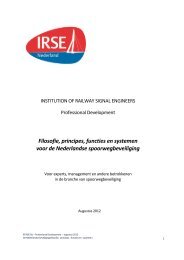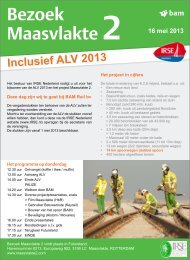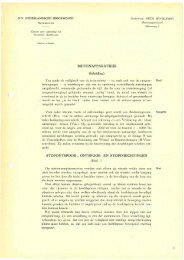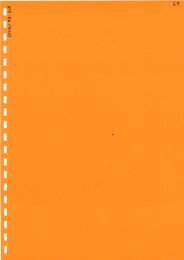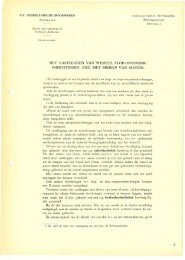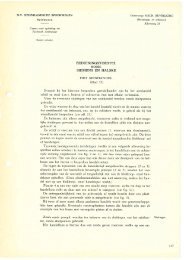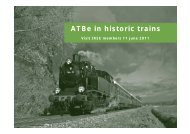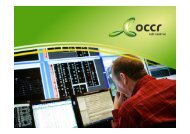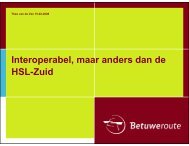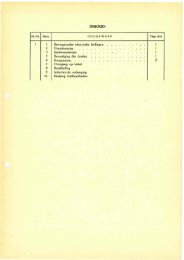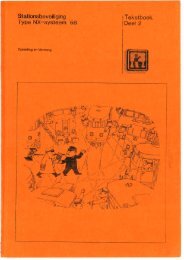intermittent and continuous ATP 101119 - irse.nl
intermittent and continuous ATP 101119 - irse.nl
intermittent and continuous ATP 101119 - irse.nl
- No tags were found...
Create successful ePaper yourself
Turn your PDF publications into a flip-book with our unique Google optimized e-Paper software.
Examplesof <strong>ATP</strong>/ATC systemsLZB As Example Of A Continuous SystemThe LZB system was specified by UIC in the 1960s. A first implementation wasbuilt between Augsburg an Munich in 1965, where a maximum speed of 200 kph wasdemonstrated in passenger traffic. In 1972, a first line between Hamburg <strong>and</strong> Bremenwas taken into operation, which was based on a 2-out-of-3 computer system. Sincethen, all high speed lines in Germany were equipped with this system. Spain <strong>and</strong>Austria also adopted the computer based LZB system <strong>and</strong> lines in both countries arein operation.System SummaryIn the LZB system, all fixed data (i.e. line geography, permanent speedrestrictions) are stored in the LZB centre. The interlocking systems forward signalaspects, point settings <strong>and</strong> other element data to the control centre, the trains withinthe range of the system transmit their specific data, e.g. train length, train position,actual speed, etc.From this data the control centre determines for each train the target values suchas distance to stopping point which then are converted on board to a maximumpermissible speed. Since signal settings for several block sections ahead areforwarded, the maximum speed can be increased <strong>and</strong> the maximum braking distancecan be longer than the signal aspects of existing lineside signalling would allow.Operation Of The LZB SystemIn the LZB system stationary trackside information is combined with informationfrom mobile train-borne equipment. The resulting information is transmitted to thevehicles via inductive line loops. An inductive loop is formed between the rails bymeans of a cable laid according to installation st<strong>and</strong>ard B3 (UIC St<strong>and</strong>ard ORE A46).The maximum logical loop length is 12.7 km. The conductors are transposedevery 100 m for compensating electrical characteristics as well as for determining thephysical positions of the trains. The on-board equipment senses the phase changewhen passing a transposition. The number of transpositions passed is counted.LZB TransmissionThe position of a train is transmitted to the control centre by indicating thenumber of 100 m-sections traversed by the front of the train (coarse positions). The24





